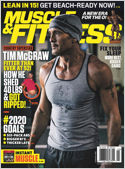Knowing the basic anatomy of the shoulder makes it much easier to choose the most appropriate weight lifting exercises for an effective routine. The barbell or dumbbell shoulder press is the ultimate mass builder for all 3 deltoid muscles, although most emphasis is placed on the anterior head. Avoid performing shoulder presses behind the neck if using a barbell as doing so can place undue stress on the rotator cuff. Front, lateral, and bent-over lateral dumbbell shoulder raises target each of the 3 heads (anterior, medial, and posterior respectively) individually and are great for developing separation between these muscles. Front raises can be changed from an isolation to a compound exercise by using a barbell, working both anterior heads together. Wide grip upright rows are a very effective movement for isolating the medial heads from the remainder of the shoulder muscles (the trapezius and biceps are also heavily involved) with much more weight than used for lateral raises. Another effective mass building exercise for the medial deltoids are lateral raises performed on a machine because the range of motion is locked and both shoulders move together. The posterior heads are brought into play significantly during almost every upper back exercises and therefore do not required a lot of direct work for development (a good number of shoulder routines actually group these muscles as part of the upper back and exclude them from the workout). Proper form is the most effective method of strengthening the rotator cuffs and specialized exercises should be avoided altogether (read this article).
Anterior Deltoid Emphasis
- Barbell or dumbbell shoulder press 2-3x6-10
- Dumbbell lateral raises 2-3x10-15
- Dumbbell bent-over lateral raises 2-3x10-15
- Barbell front raises 2-3x8-12
- Dumbbell lateral raises 2-3x10-15
- Machine lateral raises or wide grip upright rows 2-3x8-12
- Barbell or dumbbell shoulder press 2-3x6-10
- Bent-over lateral raises 2-3x10-15



